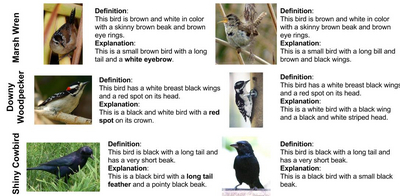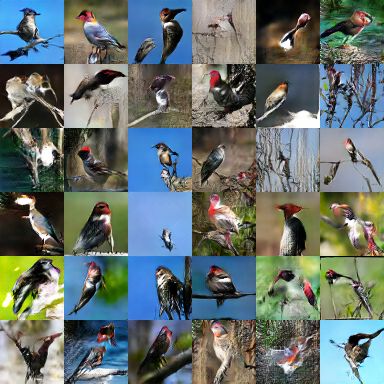Generative Models

Generating Visual Explanations
Clearly explaining a rationale for a classification decision to an end-user can be as important as the decision itself. Existing approaches for deep visual recognition are generally opaque and do not output any justification text; contemporary vision-language models can describe image content but fail to take into account class-discriminative image aspects which justify visual predictions. We propose a new model that focuses on the discriminating properties of the visible object, jointly predicts a class label, and explains why the predicted label is appropriate for the image. We propose a novel loss function based on sampling and reinforcement learning that learns to generate sentences that realize a global sentence property, such as class specificity. Our results on a fine-grained bird species classification dataset show that our model is able to generate explanations which are not only consistent with an image but also more discriminative than descriptions produced by existing captioning methods.

Generative Adversarial Text to Image Synthesis
A longstanding challenge in AI is to generate realistic images from text descriptions. In the fully general case, the field is still far from this goal. However, in recent years generic and powerful recurrent neural network architectures have been developed to learn highly discriminative text feature representations. Meanwhile, deep convolutional generative adversarial networks (GANs) have begun to generate highly compelling images of specific categories such as faces, album covers, room interiors and flowers. In this work, we develop a novel deep architecture and learning methodology to effectively bridge these technologies. We demonstrate the capility of our model to generate realistic images of birds and flowers from detailed text descriptions.

Learning What and Where to Draw
Generative Adversarial Networks (GANs) have recently demonstrated the capability to synthesize compelling real-world images, such as room interiors, album covers, manga, faces, birds, and flowers. While existing models can synthesize images based on global constraints such as a class label or caption, they do not provide control over pose or object location. We propose a new model, the Generative Adversarial What-Where Network (GAWWN), that synthesizes images given instructions describing what content to draw in which location. We show high-quality 128 x 128 image synthesis on the Caltech-UCSD Birds dataset, conditioned on both informal text descriptions and also object location. Our system exposes control over both the bounding box around the bird and its constituent parts. By modeling the conditional distributions over part locations, our system also enables conditioning on arbitrary subsets of parts (e.g. only the beak and tail), yielding an efficient interface for picking part locations. We also show preliminary results on the more challenging domain of text- and location-controllable synthesis of images of human actions on the MPII Human Pose dataset.
